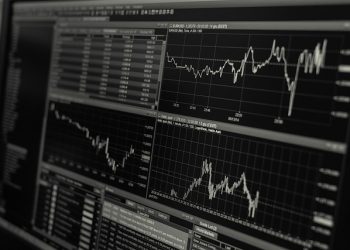Consumer Price Index – Consumer inflation climbs at fastest pace in 5 months
The numbers: The price of U.S. consumer goods as well as services rose as part of January at probably the fastest speed in five months, largely due to higher fuel prices. Inflation much more broadly was yet very mild, however.
The consumer priced index climbed 0.3 % last month, the federal government said Wednesday. That matched the expansion of economists polled by FintechZoom.
The rate of inflation with the past 12 months was the same at 1.4 %. Before the pandemic erupted, consumer inflation was running at a greater 2.3 % clip – Consumer Price Index.
What happened to Consumer Price Index: Almost all of the increased amount of consumer inflation previous month stemmed from higher oil as well as gasoline costs. The price of gasoline rose 7.4 %.
Energy costs have risen inside the past few months, though they’re still much lower now than they have been a year ago. The pandemic crushed traveling and reduced how much folks drive.
The cost of food, another household staple, edged in an upward motion a scant 0.1 % previous month.
The prices of food as well as food invested in from restaurants have both risen close to four % with the past year, reflecting shortages of certain foods and increased expenses tied to coping aided by the pandemic.
A standalone “core” level of inflation that strips out often-volatile food and power costs was horizontal in January.
Very last month prices rose for car insurance, rent, medical care, and clothing, but people increases were balanced out by lower costs of new and used cars, passenger fares and leisure.
What Biden’s First 100 Days Mean For You and Your Money How will the new administration’s strategy on policy, company & taxes impact you? With MarketWatch, the insights of ours are focused on offering help to comprehend what the media means for you as well as the money of yours – whatever the investing expertise of yours. Be a MarketWatch subscriber now.
The core rate has increased a 1.4 % within the previous year, the same from the previous month. Investors pay better attention to the primary fee since it provides an even better feeling of underlying inflation.
What is the worry? Several investors as well as economists fret that a much stronger economic
healing fueled by trillions in fresh coronavirus tool can drive the rate of inflation above the Federal Reserve’s 2 % to 2.5 % later on this year or even next.
“We still think inflation is going to be much stronger with the majority of this year compared to most others currently expect,” stated U.S. economist Andrew Hunter of Capital Economics.
The speed of inflation is apt to top 2 % this spring simply because a pair of unusually detrimental readings from previous March (0.3 % ) and April (0.7 %) will decline out of the annual average.
Yet for today there is little evidence right now to suggest rapidly creating inflationary pressures within the guts of this economy.
What they are saying? “Though inflation stayed average at the start of year, the opening further up of the economic climate, the possibility of a larger stimulus package rendering it via Congress, and shortages of inputs all point to hotter inflation in coming months,” stated senior economist Jennifer Lee of BMO Capital Markets.
Market reaction: The Dow Jones Industrial Average DJIA, -1.50 % and S&P 500 SPX, -0.48 % had been set to open up higher in Wednesday trades. Yields on the 10 year Treasury TMUBMUSD10Y, 1.437 % fell somewhat after the CPI report.
Consumer Price Index – Customer inflation climbs at fastest pace in 5 months

